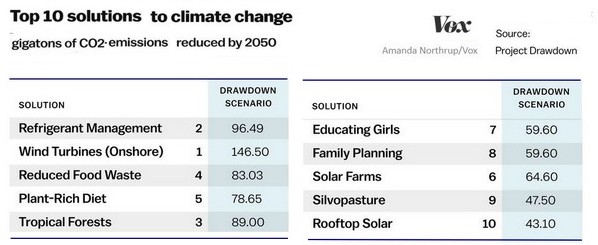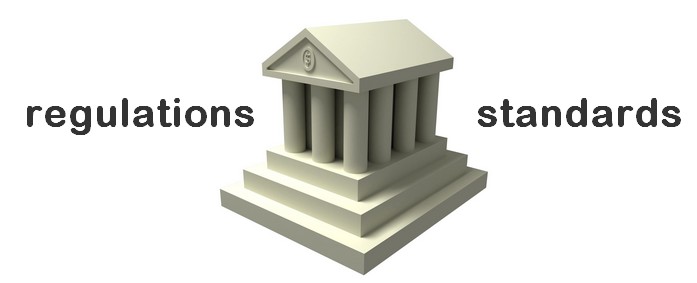Paul Hawken’s Drawdown Project
The Book – “DRAWDOWN. The most comprehensive plan ever proposed to reverse global warming”. Edited by Paul Hawken, as described at Vox.com. Hawken’s Drawdown project takes an analytic approach, and has worked dilligently to “map, measure, and model” the 100 top solutions to global warming. Link to the Drawdown Book sale site.

The solutions are novel, in that carbon emission reduction is not the only goal. Reducing refridgerant burden is high on the list.

Likewise, educating girls and family planning can have huge impacts, through ethical reduction of more than a billion persons on the planet. Not everyone thinks of this, in terms of climate change. This conclusion is shared by RescueTheWorld.net (RtW) – that earth’s population is too large for its natural resources. See the Population, Education and Biocapacity pages at RtW.net.
Plant-rich diets are emphasized in drawdown solutions, as well as silvopasture, or animal agriculture in a forest environment. Food production info is covered extensively at RtW.net too.

Link to the Solutions page at Drawdown.org.
Scroll down to see an extravaganza of images and
stories about meeting climate change challenges.
Policies and Standard Solutions, by Hal Harvey
CEO of Energy Innovations – Their Innovation Tool: “Energy Policy Simulator”, is described in a Vox.com article. Harvey notes thast 70% of CO2 emissions are from 7 – 20 countries, who need to agree on goals before getting 200+ nations on-board. Link to the – Energy Innovations website. Purchase the book “Designing Climate Solutions: A Policy Guide for Low-Carbon Energy”, by H. Harvey et al.
______
One important premise is that we already have much of the technology and tools to address climate change, if there were strong policies in place, regarding standards. The building industry is given as an example, where standards were required to make dwellings safe. The contrast between a well-regulated industry and one with a pause in targets is highlighted in charts by Energy Innovations. Refrigeration showed continuous improvement, while vehicle fuel efficiency gains stalled, when emission targets were lifted. The power of policies and standards is clear.
Continuous improvements in Refrigeration, a regulated industry. Pause in vehicle Fuel Efficiency, during de-regulation, 1990-2010

Another premise is that four major sectors are causing the majority of carbon polution, and that as few as 10 well-defined Policies may be able to meet goals in CO2 reduction, as required to roll back climate change.
Harvey notes that a lot of political capital is consumed in trying to apply or modify carbon fees or other tax measures. He points out once a policy is in place, with standards targets for on-going improvement, that it can sustain itself, without further use of polical capital.
_______
Benefit: Long-term power of policies.

